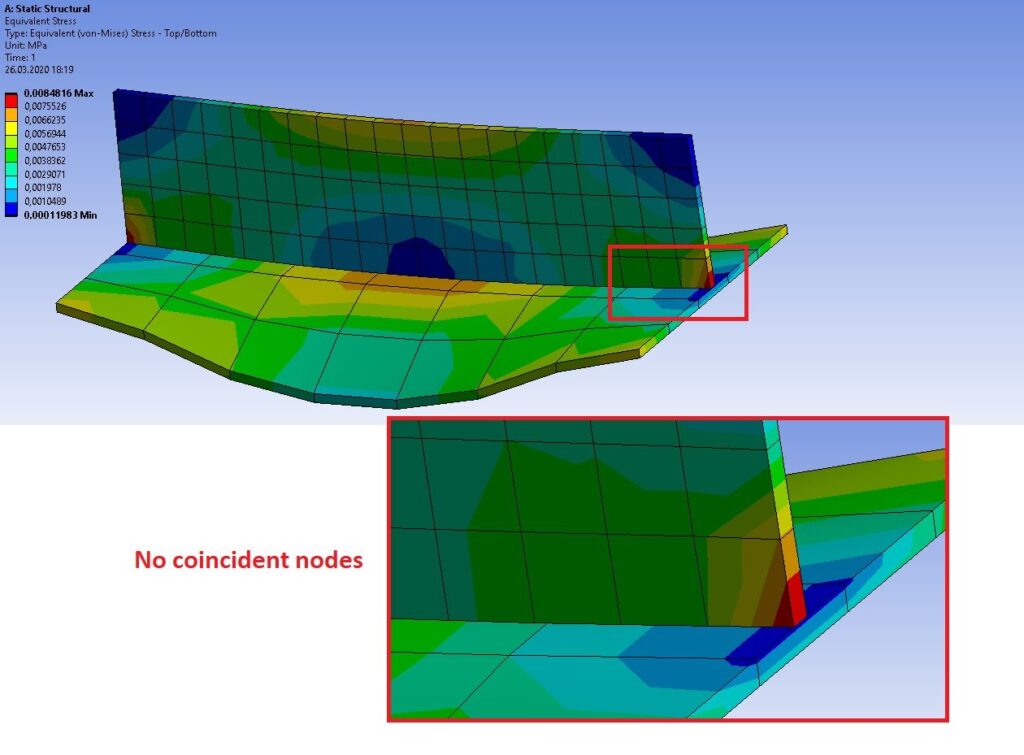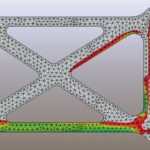Have you ever noticed that there is an option to change your Bonded contact formulation from Pure Penalty to MPC Bonded?
Have you ever wondered what this means?
Have you ever wondered when you should use it?
If you answered yes to any or all of the above questions you are not alone. The option to use kinematic Multi Point Constraints (or MPCs) for linear contact formulations has been available in ANSYS MAPDL and ANSYS Mechanical (Workbench) for several releases. The setting is relatively hidden under KEYOPT(2) in MAPDL but is easily found in the Formulation pull down in the Details menu in Mechanical.
 |
Before we delve into the advantages of using Multipoint Constraint contact, let’s first review what standard (Pure Penalty) Bonded means. Bonded contact is a linear form of a contact based connection. A linear penalty-based contact connection between two bodies must have contact elements on one body and target elements on the other. The contact and target elements lay on the outer faces of each body’s solid elements like a skin.
The contact and target elements have no actual degrees of freedom, they piggy-back on the solid elements that they are attached to. At the beginning of each load increment the contact elements search for any target elements that are within their range of interest, the range being defined by the pinball radius setting of the contact pair. The contact elements have a stiffness in the normal direction that defines the connection between the two bodies. You can think of the contact element acting like a glue that holds the bodies together. The stiffness of this glue is the normal contact stiffness. So, despite the “bonded” definition, there is still some flexibility in the connection between the two bodies as illustrated below by a graph of the contact stiffness versus the resulting gap for a simple test model:
 |
By contrast the MPC formulation for Bonded contact does not have a stiffness calculated for the connection. The MPC connection uses rigid constraint equations between the solid elements on the contact and target faces for a truly bonded connection. The connection locations are still determined using the contact element pinball radius but after that the contact elements are replaced with internal constraint equations. The MPC method has the following advantages:
● Degrees of freedom at the nodes on the contact and target faces are eliminated by the constraint equations. This reduces the problem size although you may want to pay close attention to the solver method used. Some solvers perform better than others when constraint equations are used.
● A contact stiffness calculation is not required because a rigid connection is defined by the constraint equations.
● Both translational and rotational degrees of freedom are accounted for.
● Since the constraint equations are MPC-based they will be updated in large deformation analyses.
The MPC option also works for No Separation linear contact. So if you need a truly Bonded or No Separation connection that reduces the DOF count and updates with large deformation, give the MPC Bonded and MPC No Separation formulation a try.


